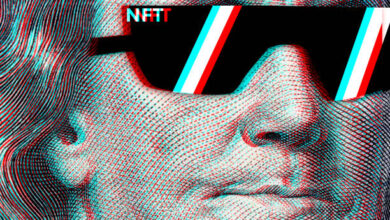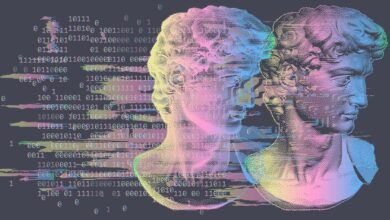Emerging TechnologiesPrivacy
Contact Tracing Through Bluetooth Technology and Geo-Fencing: Comparison, Usage and Effectiveness

In these testing times, when humans all around the world are locked down in their homes, there is one thing that has kept us all going, i.e. Technology. People are finding new ways through technological advancements to keep adrift with the world and keep moving forward, deploying the use of technologies, like online office meetings, classes, and webinars through applications like Zoom, Impartus, Skype, etc. However, more importantly, the governments all around the world are also using technology to contain this deadly virus and the consequent pandemic which it has brought with it. Techniques like geo-fencing and Bluetooth contact tracking are being deployed by various governments and agencies around the world to contain the spread of the virus. In this article, I have discussed the working, usage, effectiveness of these two techniques and drawn a comparative analysis.
Geo-fencing is a technique that creates a virtual boundary around a geographical area with the help of a Global Positioning System (GPS), cellular data, wireless internet, and Radiofrequency Identification (RFID).[1] It is a geographical boundary that cannot be seen, but as soon as a person enters the said boundary, it triggers the software which issues alert. The geographical boundary can be a prescribed area in kilometers, the boundary of a house, a city, or any such place. First of all, the developer needs to define a boundary known as a geographical boundary. If any person or mobile phone or a tablet enters that defined territory, the developer will be informed of such intrusion. There are two types of geo-fencing: Active geo-fencing and Passive Geofencing. Active Geofencing can be used from smartphones and uses location services for tracking. This technology helps to power things like home applications or “apps” that automatically adjust ambient temperature and lighting when a person enters their house. “Passive” geofencing technology is used to both (1) push advertising and other information to consumers through social media apps and other channels and (2) monitor or pulls information about a consumer’s habits.
The Geo-fencing technique is being used in a lot of applications these days. For instance, if the boundary of a house is established as the virtual geographic territory, then, when you enter this area, the lights of your house automatically switch on with the help of the said technology. This same technique is also used in Snapchat location filters or any custom-made filter for a party or any promoted filter of a concert.[2] Similarly, when a consumer passes by an area of a grocery store and has installed the app of that store on his mobile phone, geofencing technology will automatically send messages to the consumer about the deals being offered at that store. This method of marketing is very common in several countries around the globe.
Currently, the entire world is fighting the deadly coronavirus, which has claimed more than 100,000, lives globally. The primary aim of the authorities is to track the record of all those people, who came in contact with the individuals who had the disease, so as to ensure the containment of the virus. The Governments of many states have adopted the Geo-Fencing technology to trace people who break quarantines and make people aware if they have come in contact with a person who is discovered corona positive. So, a mobile application is made, which creates a virtual boundary around the affected person. This helps to know how many people have come in- contact with the affected person. Similarly, if a person breaches the home quarantine and moves out of his house, which is determined as the virtual boundary, then also the same can be tracked by the authorities. This technique helps to locate the person and marks his location on the map. The police keep a record of all the places a person traveled. But in some cases, the person may leave the phone at home, which is a serious issue as all efforts to quarantine that person will go in vain.
Geo-Fencing technique raises serious privacy concerns as all data related to the user is available to the government. This can actually reveal more data than required. Due to the usage of GPS, the exact location of the user is available and all places that he had been traveling come under the scanner. One can actually come to know about the patient’s personal preferences which may be misused at times. In India, Kerala is the first state to use Geo-Fencing techniques to track COVID-19 cases. However, the state has taken certain steps to avoid misuse of patients’ data by deleting the information after 14 days and the tracking would be done only for a particular period. Also, this technique can be used only in those cases where the user has a mobile phone from Airtel, Vodafone-Idea or Reliance Jio, as BSNL/MTNL(government-owned) do not support location-based services.
Another tool is the Bluetooth based technology called beacons, which uses low energy signals within a certain range for identifying a person. It does not disclose the location of the person, as is done in geofencing. Many big companies like Apple and Google are coming together to make an application based on Bluetooth technology for contact tracing of corona infected patients. When two people come in contact with each other, the Bluetooth signals from one mobile phone emit some signals known as ‘chirps’ to another device that can remember it. If a person later is tested positive, he can upload the list of chirps their phone has put out in the past 14 days. Other people can then scan the database to see if any of those chirps match the ones picked up by their phones. If there’s a match, a notification will inform that person that they may have been exposed to the virus and will include information from public health authorities on the next steps to take.[3] Even if the phones are in a close range say 15 minutes, a ‘contact event’ is said to be made. Many countries, like the United States of America, China, Hong Kong, etc., are using this technology to trace people who came in contact with affected patients.
Recently, the Ministry of Electronics and Information Technology [MeitY] has launched an application named Arogya Setu which is available in 11 languages. It is designed to keep the user informed if he had contact with an infected person. In case the user had a contact with such a person the user is immediately alerted of the same. This application uses Bluetooth for tracking and it is advisable to enable Bluetooth at all times for effective tracking. Arogya Setu app has a tool for self-testing for the users wherein it determines the risk of exposure of the user based on certain questions. If some of the answers suggest symptoms the data is shared with the government for necessary action. The application also has a list of instructions that need to be followed in case of self-isolation.
The difference between these two techniques is that while Bluetooth contact tracing enables a person to know whether he has been in contact with an affected person within a specified range, say 6 feet without revealing the location of that affected person on the map. In simple words, Bluetooth technology does not use the location for proximity detection. It uses Bluetooth low energy signals. It is less invasive as compared to geo-fencing, where a person’s information and location details are known to the government and other people. This raises serious privacy concerns. Secondly, users decide whether they want to contribute to contact tracing or not because it can work only when Bluetooth is enabled, whereas, in geofencing, a person does not have that freedom. After all, the location is being used. Thirdly, other users will come to know about their contact with an affected person only if he shares information on the database. It is the consent of the COVID-19 patient to decide whether to disclose his status or not. Thus, there is greater transparency in the Bluetooth system rather than the geofencing system.
However, Bluetooth based contact tracing is not that effective as compared to geofencing as it gives rise to false positives. A smartphone may catch signals from another Bluetooth enabled device if it even crosses by one’s path. If someone just passes by, the risk of contracting the disease is extremely low. Sometimes a person sitting in one room may receive signals from the device in another room, which is separated by a wall. But still, the system will show that a contact event has been made, thus giving rise to some false positive cases.[4] Geo-fencing helps to identify cases at a large scale, but again, it suffers from privacy issues that need to be addressed.
Both the techniques are useful for containing the virus but suffer from some issues. It is upon the developers and authorities to reach a consensus with regards to the possible solutions, keeping in mind the security and privacy concerns of their citizens.
[1] Sarah K. White, What is geofencing? Putting location to work, CIO India available at https://www.cio.com/article/2383123/geofencing-explained.html accessed on 11th April 2020 at 4 PM.
[2] Ibid.[3]Kylie Foy, Bluetooth signals from your smartphone could automate Covid-19 contact tracing while preserving privacy, Massachusetts Institute of Technology available at http://news.mit.edu/2020/bluetooth-covid-19-contact-tracing-0409 accessed on 11th April at 4:30 PM.
[4] Casey Newton, Why Bluetooth apps are bad at discovering new cases of COVID-19, The Verge available at https://www.theverge.com/interface/2020/4/10/21215267/covid-19-contact-tracing-apps-bluetooth-coronavirus-flaws-public-health accessed on 11th April 2020 at 3:30 PM.





